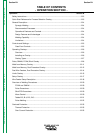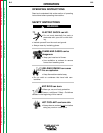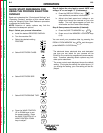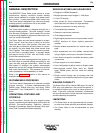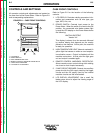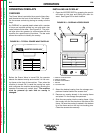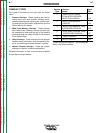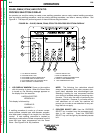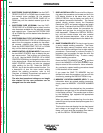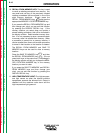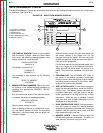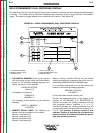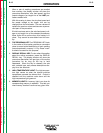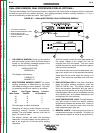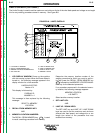
1. LCD DISPLAY WINDOW: Power up the machine
with this overlay in place. When the Power Wave
is turned on, the following message appears on
the display for a few seconds:
LINCOLN ELECTRIC
VERSION X.X
This display is followed by:
OVERLAY ID
NUMBER = 1
A welding procedure is made up of seven compo-
nents: process, material type, wire diameter, program,
wire feed speed, voltage or arc length trim, and wave
control. A new welding procedure is created by
selecting a combination of these components from the
ones that have been programmed into the Power
Wave. See Figure B.4 for key locations.
NOTE: The following four selections should
always be performed in this order: process, elec-
trode class, electrode size, electrode/gas type.
Selecting a setting for one component narrows
your choice of available settings in remaining com-
ponents. This is why the order of performing the
steps is important. However, if you make compo-
nent selections out of order, the machine will
prompt you to make a new selection for any set-
tings that do not apply.
2. PROCESS SELECT KEY: Use the PROCESS
SELECT key to select from the processes avail-
able in the machine. Press the PROCESS
SELECT key until the light by the desired process
is lit.
OPERATION
B-8 B-8
POWER WAVE 450
Return to Section TOC Return to Section TOC Return to Section TOC Return to Section TOC
Return to Master TOC Return to Master TOC Return to Master TOC Return to Master TOC
1
10
8
9
345 7
6
2
11
FIGURE B.4 – PULSE, GMAW, FCAW, STICK/TIG PROCESS SELECTION OVERLAY
1 LCD DISPLAY WINDOW
2 PROCESS SELECT KEY
3 ELECTRODE CLASS UP/DOWN KEYS
4 ELECTRODE SIZE UP/DOWN KEYS
5 ELECTRODE/GAS TYPE UP/DOWN KEYS
6 WAVE CONTROL UP/DOWN KEYS
7 DISPLAY RECALL KEY
8 SAVE TO MEMORY KEY
9 MEMORY LOCATION NUMBER KEYS
10 RECALL FROM MEMORY KEY
11 HIGH TEMPERATURE LIGHT
PULSE, GMAW, FCAW, AND STICK/TIG
PROCESS SELECTION OVERLAY
An operator can use this overlay to create a new welding procedure, save a newly created welding procedure,
view an existing welding procedure, recall an existing welding procedure, and clear a memory location. See
Figure B.4. The steps for performing each of these functions are given below.




